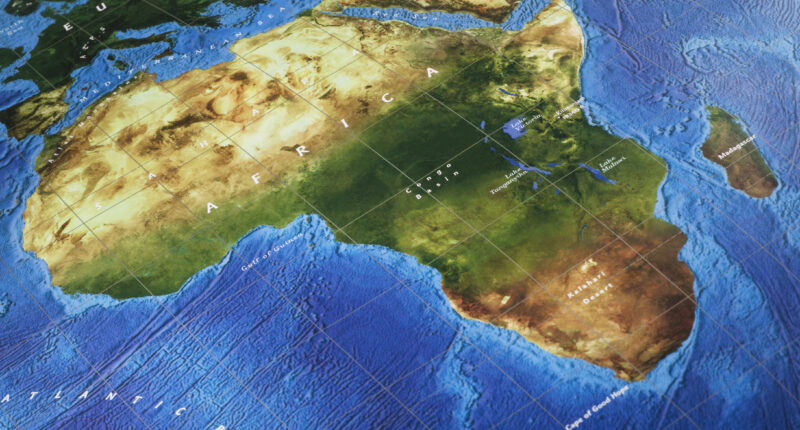A GIANT rip in the Earth’s surface that appears to be splitting the African continent in two could have an explanation, according to a recent study.
Scientists have been investigating a large ejection of heated rock coming up from Earth’s core.
The researchers published their discovery earlier this year in the Journal of Geophysical Research: Solid Earth.
Study co-author D. Sarah Stamps told Live Science that the Earth movements observed “are quite unusual and have not been observed elsewhere.”
The motions were spotted in an area called the East African Rift.
The East African Rift Valley is a continental rift zone that runs through many east African countries including Ethiopia, Kenya, and Tanzania.
That area has been studied by the researchers for over 12 years.
Their study found a large mushroom-shaped ejection of buoyant rock coming up from Earth’s mantle.
They refer to this as a “superplume”.
It’s thought this superplume and ones like it could be playing a role in changing Earth’s surface.
Most read in News Tech
Stamps reportedly explained: “This work suggests plumes may play an active role in deforming the Earth’s surface, particularly in continental rifts where the lithosphere has thinned.”
The splitting of Africa is something scientists have been observing for a while.
In five to 10 million years, Africa could be split into two large land masses with a massive ocean between them, according to one theory.
This is due to the movements of tectonic plates that lie deep underneath the African continent.
For around 30 million years, the Arabian plate has been moving away from Africa, resulting in the birth of both the Red Sea and the Gulf of Aden.
The Somali plate in eastern Africa is also moving away from the Nubian plate.
According to Live Science, researchers compared the movement to silly putty.
Geophysicist Tahiry Rajaonarison told the publication: “Imagine a stronger Silly Putty on top of a weaker Silly Putty, which represent the highly viscous lithosphere and the less viscous plume material, respectively.
“If you move the weaker Silly Putty, it will progressively stick together with the stronger Silly Putty at their interface until the stronger Silly Putty moves in the same direction.”
This post first appeared on Thesun.co.uk









